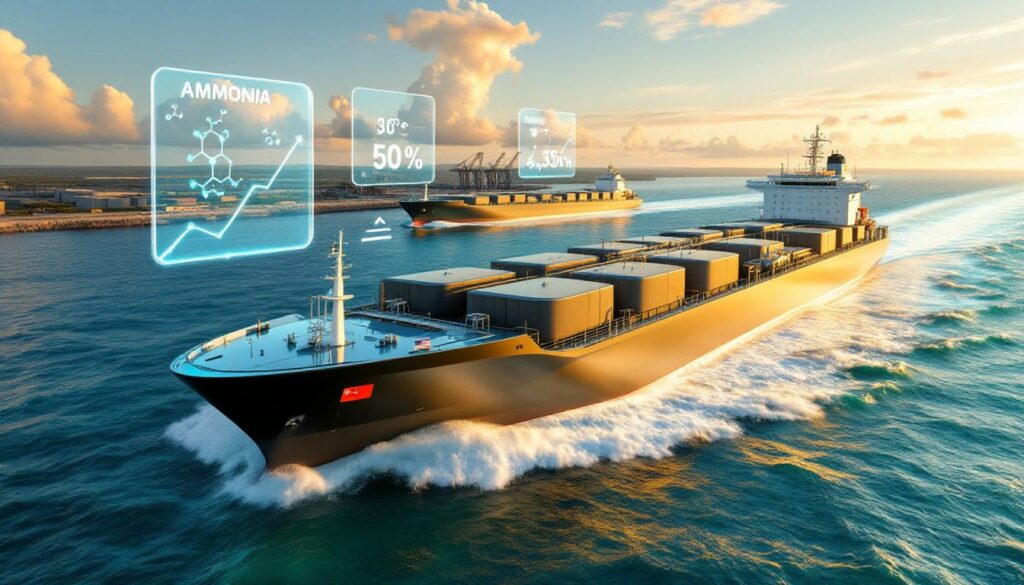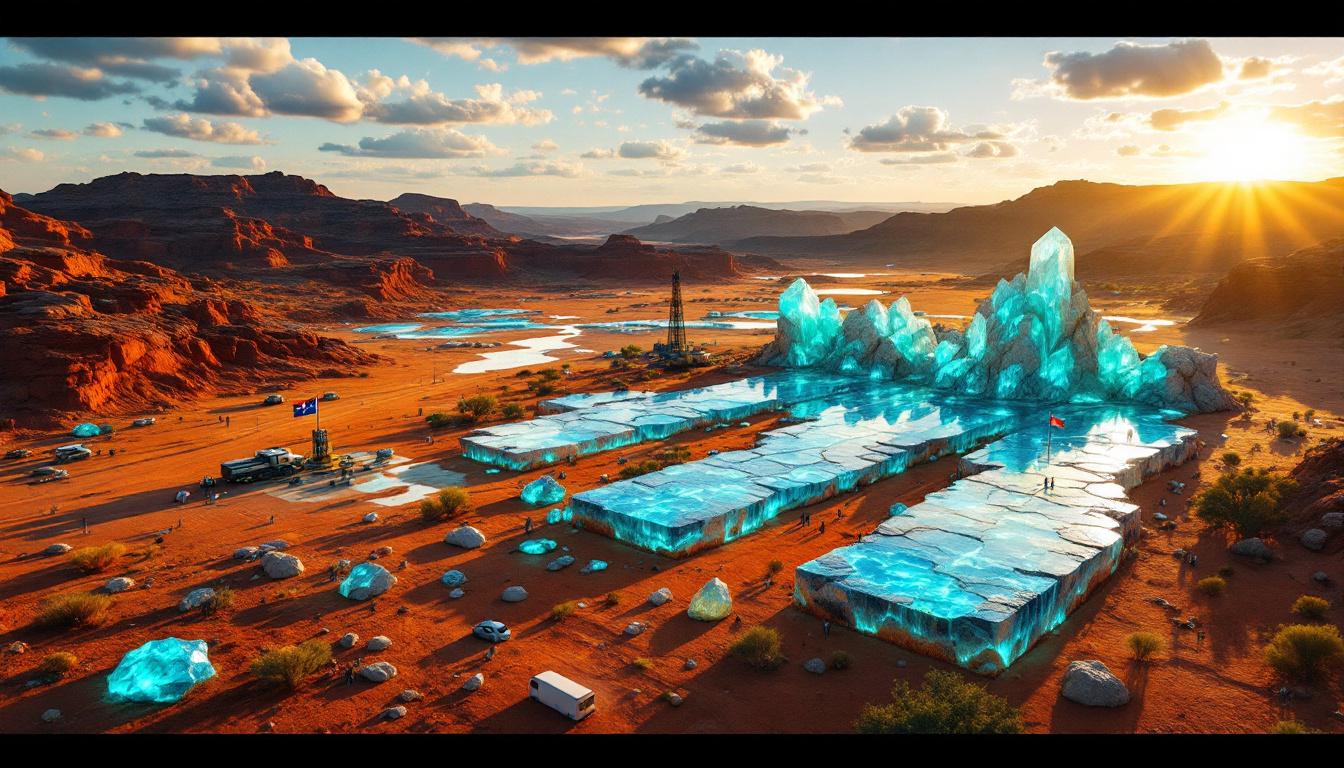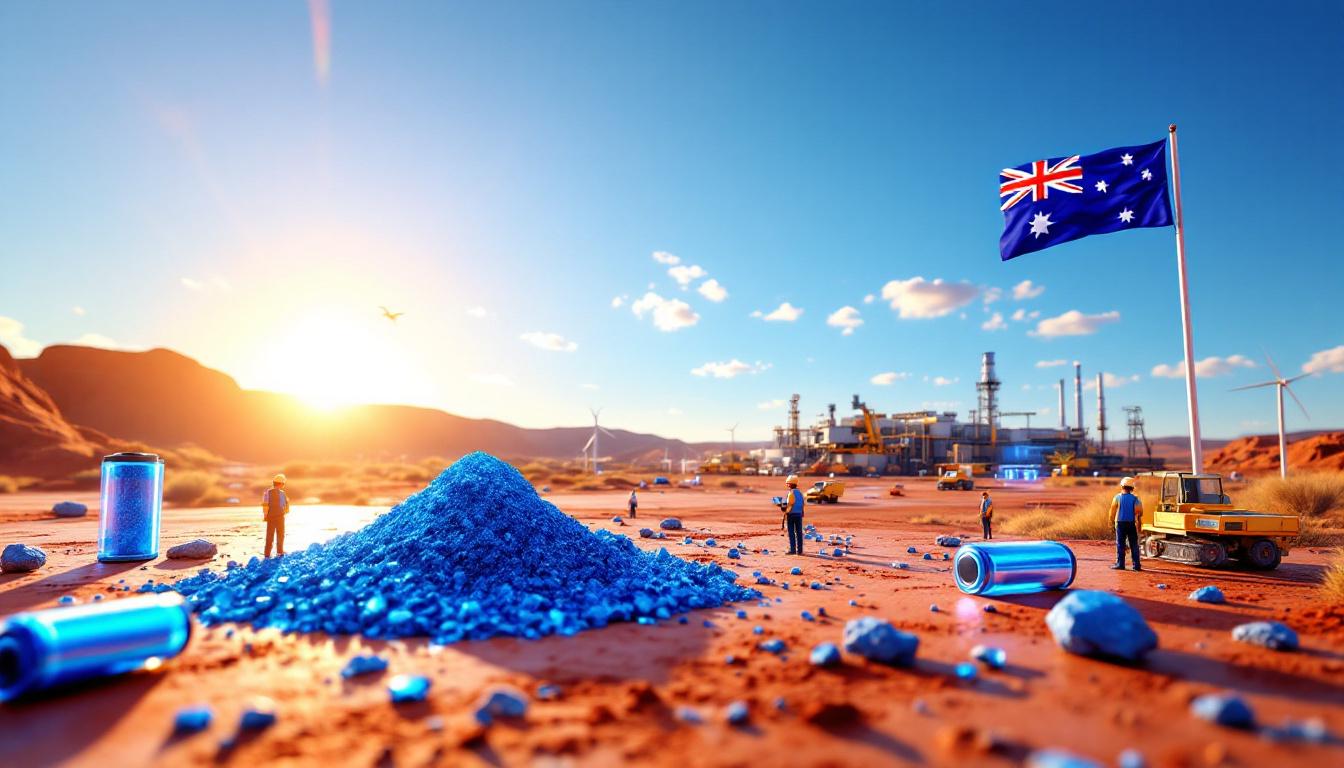BHP and COSCO Shipping's Ammonia Dual-Fuelled Vessels Deal: A Maritime Decarbonization Milestone
BHP has entered into a groundbreaking partnership with COSCO Shipping Bulk, signing charter contracts for two ammonia dual-fuelled Newcastlemax bulk carriers. These vessels represent a significant advancement in maritime decarbonization efforts, as they are among the first in the world capable of using ammonia as marine fuel. The five-year time charter contracts establish a framework for reducing greenhouse gas emissions in the iron ore shipping value chain.
Key elements of the charter agreement
- Two ammonia dual-fuelled Newcastlemax bulk carriers
- Scheduled delivery from 2028
- Primary purpose: transporting iron ore from Western Australia to northeast Asia
- Five-year time charter contracts
- Potential for 50-95% reduction in greenhouse gas emissions per voyage compared to conventional fuels
How does ammonia fuel technology reduce maritime emissions?
Ammonia represents one of the most promising alternative fuels for the maritime industry's decarbonization efforts. Unlike traditional marine fuels, ammonia produces significantly fewer greenhouse gas emissions when combusted properly in specially designed engines.
When produced using renewable energy (known as "green ammonia"), the fuel can achieve near-zero emissions on a well-to-wake basis, making it particularly attractive for hard-to-abate sectors like bulk shipping. This approach aligns with broader energy transition insights that emphasize the importance of decarbonizing transportation.
Emission reduction potential
- First-generation ammonia dual-fuelled vessels expected to reduce GHG emissions by at least 50%
- Potential for up to 95% reduction on a per voyage basis
- Contributes to maritime industry's broader decarbonization goals
- Addresses emissions in hard-to-abate sectors like bulk shipping
Technical considerations for ammonia as marine fuel
- Requires specialized engine technology to handle ammonia's different combustion properties
- Dual-fuel capability provides operational flexibility
- Necessitates development of new bunkering infrastructure
- Demands careful handling protocols due to ammonia's toxicity
MAN Energy Solutions is among the leading developers of ammonia-powered marine engines, with several prototypes currently undergoing testing. These engines must overcome ammonia's lower flammability compared to conventional fuels while managing the compound's potential toxicity.
Safety note: Ammonia (NH₃) emits no CO₂ when combusted but requires robust safety systems including reinforced storage, AI-powered leak detection, and specialized crew training protocols.
Why is this partnership strategically important?
The BHP-COSCO partnership represents more than just an operational agreement—it signals a significant commitment to sustainable shipping practices and establishes a potential pathway for broader industry adoption of alternative fuels.
Alignment with BHP's decarbonization strategy
- Supports BHP's First Movers Coalition commitment
- Targets having 10% of products shipped via zero GHG emissions fuels by 2030
- Demonstrates leadership in addressing Scope 3 emissions
- Positions BHP as an industry pioneer in sustainable shipping
As one of the world's largest dry bulk charterers with approximately 300 vessels chartered annually, BHP's influence on maritime decarbonization extends far beyond this single partnership. Scope 3 emissions—those occurring downstream in BHP's value chain—constitute approximately 90% of the company's carbon footprint, making shipping emissions a critical target for reduction efforts.
Industry significance and market implications
- Creates momentum for ammonia as a viable marine fuel
- Establishes precedent for similar agreements between major resource companies and shipping providers
- Potentially influences regulatory frameworks for maritime emissions
- Signals market readiness for investment in alternative fuel infrastructure
This partnership could significantly impact chartering rates, potentially creating a premium market for green vessels compared to conventional fleets as more companies seek to reduce their maritime carbon footprint. Furthermore, the deal represents a notable advancement in mining industry innovation as resource companies look beyond their direct operations to address environmental impacts.
What challenges must be overcome for ammonia-fuelled shipping?
Despite the promising environmental benefits, several significant challenges must be addressed before ammonia can become a mainstream marine fuel option for the global shipping fleet.
Infrastructure development requirements
- Bunkering facilities for ammonia must be established at key ports
- Production capacity for low or zero-emissions ammonia needs expansion
- Supply chain logistics for ammonia distribution require development
- Safety protocols and handling procedures need standardization
According to the International Energy Agency (IEA), scaling green ammonia production to meet maritime fuel demands would require a 5-10 fold increase in current global electrolyzer capacity. This represents a massive infrastructure challenge that will require coordinated investment across the entire value chain.
Singapore's $200 million ammonia bunkering pilot project (scheduled for 2026) provides a potential model for Australian ports seeking to develop similar capabilities along the critical Australia-Asia shipping routes.
Economic and practical considerations
- Higher initial capital costs for specialized vessels
- Potential operational adjustments for crew training and safety
- Regulatory frameworks still evolving for alternative marine fuels
- Cost competitiveness compared to conventional fuels
The International Maritime Organization (IMO) has yet to finalize carbon pricing mechanisms for shipping, creating regulatory uncertainty that complicates investment decisions. Additionally, the current production costs for green iron production and green ammonia remain significantly higher than conventional Very Low Sulfur Fuel Oil (VLSFO), though this gap is expected to narrow as production scales.
What are the industry executives saying about the deal?
The significance of this partnership is underscored by statements from key executives at both BHP and COSCO Shipping, highlighting the collaborative nature of maritime decarbonization efforts.
BHP's perspective on the partnership
Emma Roberts, BHP's Vice President Maritime and Supply Chain Excellence, described the charter as "an exciting moment for BHP, COSCO Shipping and the maritime sector," noting that "Together we are contributing to the industry's ambition towards abatement of maritime greenhouse gas emissions through these first-generation ammonia dual-fuelled vessels."
Roberts further emphasized BHP's strategic position, stating: "As one of the world's largest dry bulk charterers, BHP sees this as an opportunity to help establish a pathway for ammonia to be a marine fuel for a globally significant industry where emissions can be difficult to abate."
COSCO Shipping's commitment to innovation
COSCO Shipping Vice President Ji Lin characterized the deal as "more than just a step towards alternative fuels," describing it as "a symbol of how our collaboration is evolving with the times."
Lin emphasized the broader significance: "These vessels will stand at the forefront of technological and environmental advancement – not just for COSCO Shipping and BHP, but for the broader dry bulk sector."
How does this fit into the broader maritime decarbonization landscape?
The shipping industry faces increasing pressure to reduce its environmental footprint, with international regulations and market expectations driving innovation in vessel design and alternative fuels.
Current maritime decarbonization initiatives
- International Maritime Organization (IMO) targets for reducing shipping emissions by 20% by 2030 (compared to 2008 levels) and 70-100% by 2040
- Growing interest in alternative fuels including hydrogen, methanol, and ammonia
- Development of more efficient vessel designs and operational practices
- Industry collaborations to accelerate technology adoption
Maersk's order of 25 green methanol vessels (for delivery between 2024-2027) represents another significant investment in alternative marine fuels. Meanwhile, Yara's collaboration with AM Green aims to produce 1 million tonnes of renewable ammonia annually, demonstrating growing momentum in the alternative fuels supply chain.
Ammonia's position among alternative marine fuels
- Zero carbon emissions potential when produced from renewable sources
- Higher energy density than hydrogen
- Existing production and handling infrastructure (from fertilizer industry)
- Technical challenges related to toxicity and corrosiveness
Ammonia holds several advantages over competing alternative fuels. Unlike hydrogen, it doesn't require cryogenic storage, and unlike methanol, it contains no carbon. However, its toxicity presents unique safety challenges that must be addressed through robust engineering solutions and operational protocols. The maritime sector's interest in ammonia parallels electrification trends seen across the mining industry, as both seek to reduce fossil fuel dependence.
What's next for BHP's ammonia bunkering plans?
For this initiative to succeed, BHP must develop comprehensive ammonia bunkering capabilities and secure sustainable ammonia supplies.
Developing ammonia infrastructure
- BHP continues to develop an ammonia bunkering plan through industry collaboration
- Working with maritime partners to establish necessary infrastructure
- Exploring potential bunkering locations along key shipping routes
- Addressing safety and operational requirements
With no existing ammonia bunkering hubs currently available on Australia-Asia routes, BHP faces the challenge of either developing new facilities or partnering with emerging initiatives like Singapore's pilot project to ensure fuel availability for the new vessels.
Sourcing sustainable ammonia
- BHP actively sourcing lower and low to zero emissions ammonia
- Potential partnerships with ammonia producers
- Consideration of green ammonia production facilities
- Evaluating certification standards for sustainable ammonia
Australia's renewable energy potential positions it as a potential leader in green ammonia production. Several ARENA-funded projects are already underway, including Fortescue's Gibson Island green ammonia plant, which aims to produce 5,000 tonnes per day once fully operational.
Market insight: As demand for green ammonia grows, early adopters like BHP may secure favorable supply agreements that provide both environmental and economic advantages in the long term.
FAQ: BHP and COSCO Shipping Ammonia Vessel Partnership
What makes these vessels different from conventional bulk carriers?
These Newcastlemax vessels feature specialized engines capable of running on both conventional marine fuels and ammonia. The dual-fuel capability provides operational flexibility while enabling significant reductions in greenhouse gas emissions when using ammonia. The vessels incorporate enhanced safety systems for ammonia handling, including reinforced storage tanks, advanced leak detection, and specialized ventilation systems.
When will these ammonia-capable vessels begin operation?
According to the announcement, the vessels are scheduled for delivery from 2028, with operations expected to commence shortly thereafter. This timeline aligns with projected developments in ammonia bunkering infrastructure in key ports along the Western Australia to Northeast Asia route.
How significant is the potential emissions reduction?
BHP indicates these vessels could reduce greenhouse gas emissions by between 50% and 95% per voyage compared to conventional fuels, representing a substantial improvement in environmental performance. The wide range reflects variables including the source of the ammonia (green, blue, or gray) and operational factors such as speed and load conditions.
What routes will these vessels service?
The primary purpose of these vessels will be transporting iron ore from Western Australia to northeast Asia, one of the world's busiest bulk shipping corridors. This route is strategically important for BHP, which exports significant volumes of iron ore to steelmakers in China, Japan, and South Korea.
How does this initiative support BHP's climate commitments?
This partnership aligns with BHP's First Movers Coalition commitment to have 10% of its products shipped via zero GHG emissions fuels by 2030, demonstrating the company's practical approach to addressing its Scope 3 emissions. As shipping emissions constitute a significant portion of BHP's downstream carbon footprint, this initiative represents an important step toward the company's broader decarbonization goals, which increasingly intertwine with the battery metals outlook.
Further Exploration:
Readers interested in learning more about maritime decarbonization initiatives can also explore related educational content, such as Splash247's detailed coverage of the BHP-COSCO deal which offers additional perspectives on sustainable shipping practices in the resources sector.
The partnership between BHP and COSCO Shipping represents a significant milestone in the maritime industry's journey toward decarbonization, demonstrating how collaboration between resource producers and shipping companies can drive technological innovation and environmental progress in traditionally hard-to-abate sectors.
Want to Invest in Companies Leading Maritime Decarbonisation?
Stay ahead of the market with Discovery Alert's proprietary Discovery IQ model, which instantly identifies significant ASX opportunities in green shipping, ammonia fuel technology, and other decarbonisation initiatives. Explore how major mineral discoveries create substantial returns by visiting our dedicated discoveries page and start your 30-day free trial today.




